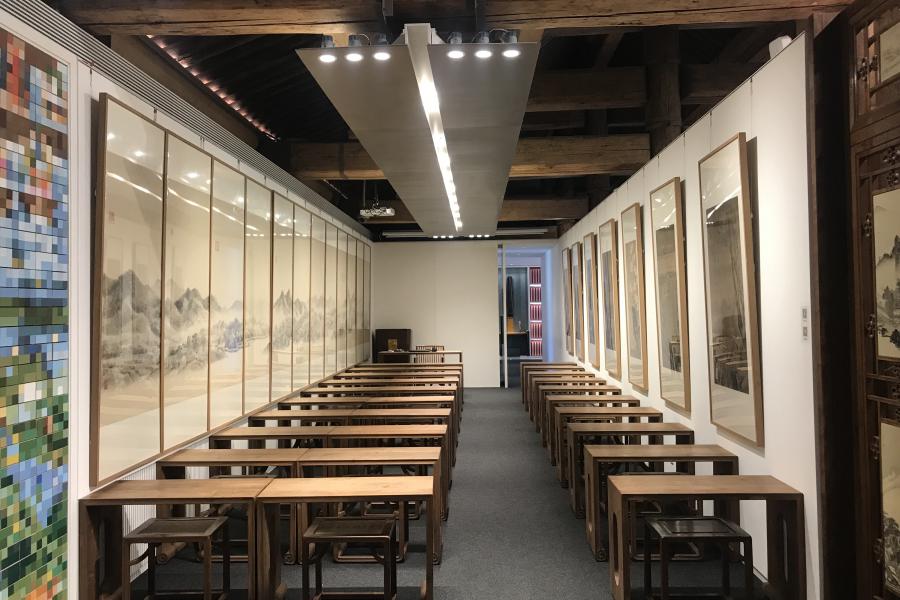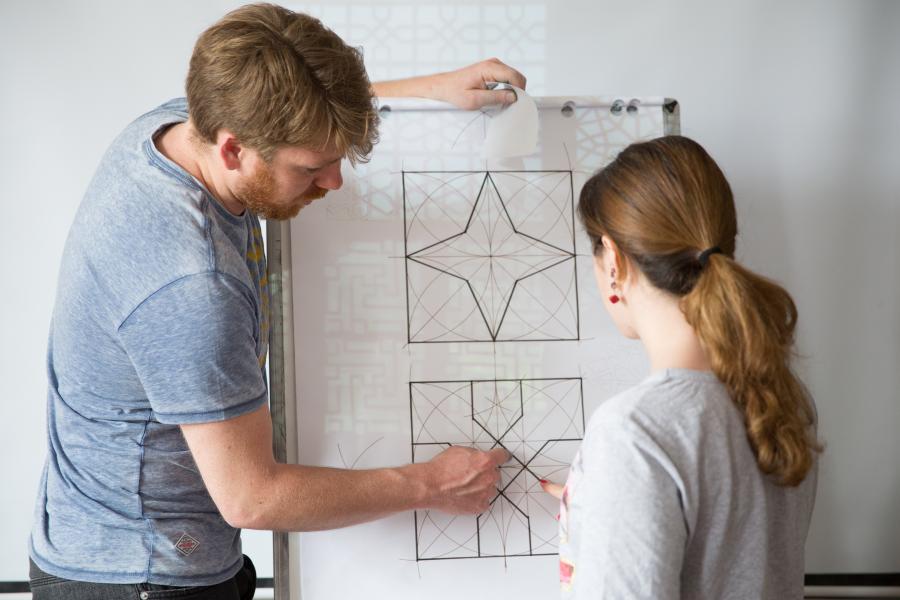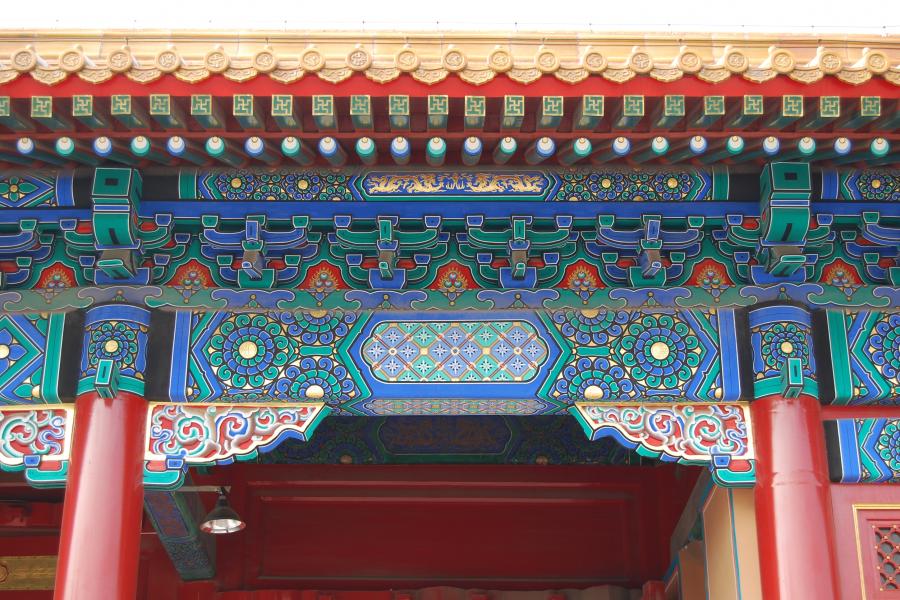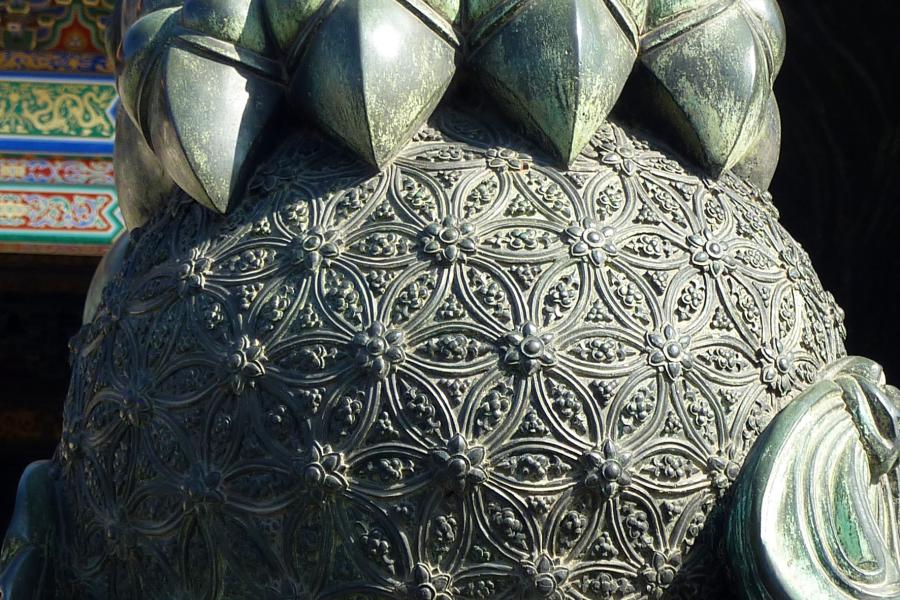The Prince’s Foundation School of Traditional Arts and The Palace Museum jointly unveil for you the secret of royal art of East and West. Experts from the School of Traditional Arts and Palace Museum will take you to explore the language of Eastern and Western traditional arts, learn how the order of nature inspires the world cultural heritage and understand the timeless arts and architecture of the Forbidden City and the classical gardens of Suzhou.
Decoding Royal Traditional Arts: Art Youth Summer Camp is a summer course to learn about royal arts designed specifically for Chinese teenagers. For two weeks, guided by tutors from The School of Traditional Arts and experts from the Palace Museum, participants will learn about the traditional arts in China and other civilizations around the world and their interrelations. The teaching will be delivered in classrooms located within the cultural heritage sites in Beijing and Suzhou. Through historically informed learning and hands-on practices, students can better understand and learn from the royal art traditions of East and West.
Participants will be guided by tutors to learn how to approach the design process and to produce series of works to reveal the links between art, culture nature and design. They will understand how patterns, symbols and motifs have been shared and adapted by different cultures, because they are drawn from our common human experience of the order of nature and its harmonious proportions. Through a variety of hands-on creative activities - observation, analysis and drawings of nature and architecture - they will understand how these designs have been created, shared and adapted by our ancestors.
All great art traditions share an awareness and understanding of the order of nature and its harmony. This understanding is absent from today's education. For years, the Prince’s School has defined the term 'the order of nature', which has been the most important point of reference in the work we do: it informs our ethos, it is reflected in the development of our unique teaching methodology and it offers a means to understand each culture’s worldview. Through this principle, we support the education and practices of traditional arts and crafts throughout the world and try to pass on our vision to the younger generation, encouraging them to create from the process of learning within a tradition. After nine years of visits and investigation, we finally launched our centre in the historical city of Suzhou. We are very happy to share our research to young people in China. ---PFSTA Director Dr. Khaled Azzam
Participants will be guided through the gardens of Suzhou and the Forbidden City to get a fuller understanding of this cultural heritage. Participants will then be guided to design and create their own artworks. The workshop will conclude with an exhibition of the participants' work at the Palace Museum.
Taught by experts from East and West, this workshop will enable personal growth in humanitarian subjects and cultivate appreciation of traditional arts through integrated learning methodology of comparison, cognition and reflection, culminating in an experience that is both outwardly and inwardly transformative.
What the students can gain from this summer camp?
• Experience creative learning through the unique teaching methodology developed by the School of Traditional Arts;
• A full immersion experience within a culturally diverse international environment;
• Develop and broaden language skills within a creative setting with classes taught in both English and Chinese;
• Nurture a deeper sense of cultural identity through the study of traditional and Royal arts and design.
• Learn the invaluable process of design from research and observation to the completion of a study sheet and a complete artwork.
• Learn a wide range of new creative practical skills, including drawing accurate complex geometric patterns by hand, and diverse painting techniques.
• Learn how to present your own work to the public during the exhibition.
• Be awarded a joint certificate of completion by the Prince’s Foundation School of Traditional Arts and the Palace Museum.
Program
WEEK 1: Suzhou at PFSTA China Centre
August 4th Sunday, Students arrivals at Suzhou
August 5th Monday, Opening Ceremony of the Summer Camp
PFSTA tutors, study at Yuan Centre
August 6th Tuesday, PFSTA tutors, Suzhou gardens study visit; Classroom study.
August 7th Wednesday: PFSTA tutors, classroom study at Yuan Centre
August 8th Thursday: PFSTA tutors, Suzhou gardens study visit; Classroom study.
August 9th Friday:PFSTA tutors, classroom study at Yuan Centre.
August 10th Saturday: Travel to Beijing
WEEK 2: Beijing, Palace Museum
August 11th, Sunday : Palace Museum study tour with PFSTA tutors and Palace Museum experts.
August 12th, Monday: Palace Museum experts classroom study.
August 13th Tuesday: Palace Museum experts, classroom study.
August 14th Wednesday: Students to complete design work.
August 15th Thursday: Students to complete artwork.
August 16th Friday:Complete artwork and set-up exhibition.
August 17th Saturday: Exhibition of artworks at Palace Museum.
August 18th Sunday: Departures
Key approaches to the study of patterns and architecture from the PFSTA will include:
• Visual analysis and observational drawing;
• Investigations of proportions and symmetries as basic design tools;
• Learn how to draw geometric patterns with accuracy and correct proportion with a compass and straight edge;
• Understand colour composition based on natural resources and traditional knowledge;
• Universal principles of design across traditions as inspired by the order of nature;
• Teaching practical art and crafts skills as an expression of the above design principles.
The Palace Museum experts will teach below knowledge:
• The historical context of these elements;
• The significance of their location and function within the Palace architecture and courtyards;
• The techniques historically employed to create these elements;
• The contributions made by different craftsmen towards the restorations of these elements throughout historical periods;
• The meaning behind the choices of colours and patterns in the decorative elements of the Palace Museum;
Co-organizer:
The Forbidden City Gallery of The Palace Museum
The Forbidden City Gallery (紫禁書院) is a subsidiary of the Beijing Palace Museum Cultural Communications Company, and is a dedicated space for cultural and artistic experience. Since it was first established in the Palace Museum’s Dongchangfang in August 2015, the Gallery has actively promoted knowledge and understanding of the culture of the Forbidden City through displays of Forbidden City publications and cultural products, educational programmes in traditional culture, onsite educational experience, art exhibitions, etc. In order to more actively foster a fuller and deeper understanding among the general public of the rich cultural heritage of the Forbidden City, the Gallery has also opened branches in different areas of the country, offering organized programmes in traditional culture and museum education comprising lecture series, seminars, cultural events, and dynamic performances.
In essence, the mission of the Forbidden City Gallery is to carry the culture of the Forbidden City beyond the walls of the Forbidden City itself. The Forbidden City Gallery initiative integrates public service and cultural industry by creating dynamic contemporary venues for the exploration of the Forbidden City culture and of the ongoing operations taking place to preserve and activate its unique heritage.
INQUIRIES AND REGISTRATION:
Ms. Chen Yun
chenyun@pfstachina.com
+86 15900672541




